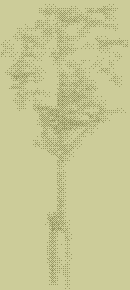
This project will
- Isolate and identify endophytic bacteria from selected phytoremediation plants
- Characterize these bacteria and determine their colonisation properties using molecular ecological techniques
- Construct endophytic bacterial strains for degradation of organic pollutants by natural gene transfer and strain engineering
- Re-inoculate modified endophytic bacteria into their host plant and study re-colonisation of the plant vascular system and expression of catabolic properties
- Mathematically model the effect of modified endophytic bacteria on phytoremediation efficiency, achieving contaminant mass balances
- Assess the risk of modified endophytic bacteria for humans, animals, plants and environment, and demonstrate improved phytoremediation at pilot and field scale
Possible contaminants, for which phytoremediation could be improved using endophytic bacterial degraders, are listed in Table 1.
| Compound | Fate in Plant (toxic, build up, or volatile) |
Reference |
| Phenols | Toxic | Pfleeger et al., 1991 |
| Chloro-phenols | Toxic | Pfleeger et al., 1991 |
| TNT | Toxic, degraded to amino-dinitrotoluene | Thompson et al., 1998 |
| Amino-dinitrotoluene | Rather persistant, toxic | Thompson et al., 1998 |
| MTBE | Volatile | Trapp et al., 1994 |
| BTEX | Volatile | Trapp et al., 1994 |
| TCE | Volatile | Trapp et al., 1994 |
| PER | Volatile | Trapp et al., 1994 |
Non-exhaustive list of pollutants that provide potential problems in phytoremediation due to uptake followed by insufficient plant metabolism.
Decreased phyto-volatilisation of toluene and TCE
Many degradation pathways for organic xenobiotics are located on mobile genetic elements, including plasmids and transposons. Therefore it should be feasible to use natural gene transfer, either based on bi- or tri-parental conjugation or exogenous plasmid isolation, for constructing strains of endophytic bacteria with improved degradation capacity of organic xenobiotics
An example is the transfer of the TOM31c plasmid, enabling growth on phenol and toluene, from B. cepacia G4 (Shields et al., 1995) into the Ni-resistance strain B. cepacia L.S.2.4::ncc-nre. Transconjugants should be selected on their ability to grow on toluene in the presence of 2 mM Ni. In addition the transconjugants will be able to degrade TCE (tri-chloro-ethylene) without induction of the tomA gene by toluene, due to the constitutive expression of the toluene-ortho-monooxygenase (Shields and Reagin, 1992).
In order to reduce phyto-volatilisation of organic xenobiotics through the plants stoma, it is suggested to inoculate plants with endophytic bacteria. These bacteria should preferentially colonise the xylem, and should be able to degrade the organic contaminant of interest, such as those mentioned in Table 1. Either natural endophytic bacteria, able to degrade the organic contaminant of interest, or endophytic bacteria equipped either by natural gene transfer or recombinant DNA techniques, can be selected for this purpose
In case the internal plant concentration of the organic xenobiotic will be too low to efficiently induce the degradation pathway or when the contaminant is degraded due to co-metabolism, mutated pathways that show constitutive expression of degradation should be preferentially introduced in the endophytic bacteria. An example is constitutively expressed toluene-ortho-monooxygenase of B. cepacia G4 (Shields and Reagin, 1992), which results in constitutive TCE degradation without the need to induce TCE cometabolism by the presence of phenol or toluene.
Improved phytoremediation of toluene and TCE, resulting in decreased phyto-volatilization, would involve the following steps:
- Selection of the plant species of interest, well adapted to the local climate and geohydrological constraints
- Isolation of endophytic bacteria from the selected plant species
- Selection or construction of toluene degrading strains or construction of recombinant stains that constitutively express the degradation pathway, including a toluene-ortho-monooxygenase that allows efficient degradation of TCE without the need of cometabolism
- Inoculation of the selected plants with the endophytic bacteria that are now equipped with the necessary degradation pathways
- The overall outcome will be improved phytoremediation of toluene and TCE due to increased in planta degradation and reduced phyto-volatilisation
A similar concept is feasible for any organic xenobiotic that is taken up by plants and for which microbial degradation pathways are available and can be expressed in plant associated endophytic bacteria.
Example 2
Decreased accumulation of tri-chloro-acetate (TCA) as metabolite of TCE degradation
Certain organic xenobiotics are partially degraded by plants. However, their efficient remediation is hindered by the accumulation of toxic degradation product. An example is the degradation of TCE by several wild plants (like oak, castor bean and others), which results in the accumulation of phytotoxic TCA (tri-chloro-acetate). The in planta accumulation of TCA and consequently its phytotoxicity might be reduced by inoculation with endophytic bacteria able to degrade TCA.
Improved phytoremediation of TCE due to reduced accumulation of phytotoxic TCA would involve the following steps:
- Selection of the plant species of interest, well adapted to the local climate and geohydrological constraints
- Isolation of endophytic bacteria from the selected plant species
- Selection or construction of TCA degrading strains or construction of recombinant stains that constitutively express the TCA degradation pathway
- Inoculation of the selected plants with the endophytic bacteria that are now equipped with the necessary TCA degradation pathway
The overall outcome will be improved phytoremediation of TCE due to reduced accumulation of phytotoxic TCA and hence survival of trees on higher-contaminated soils or groundwater.
A similar concept is feasible for any organic xenobiotic that is taken up by plants and for which partial degradation products, microbial degradation pathways are available and can be expressed in plant associated endophytic bacteria.
|
|
||
| ENDEGRADE Project Webmaster: U. Karlson, uka@dmu.dk - NERI - Denmark |